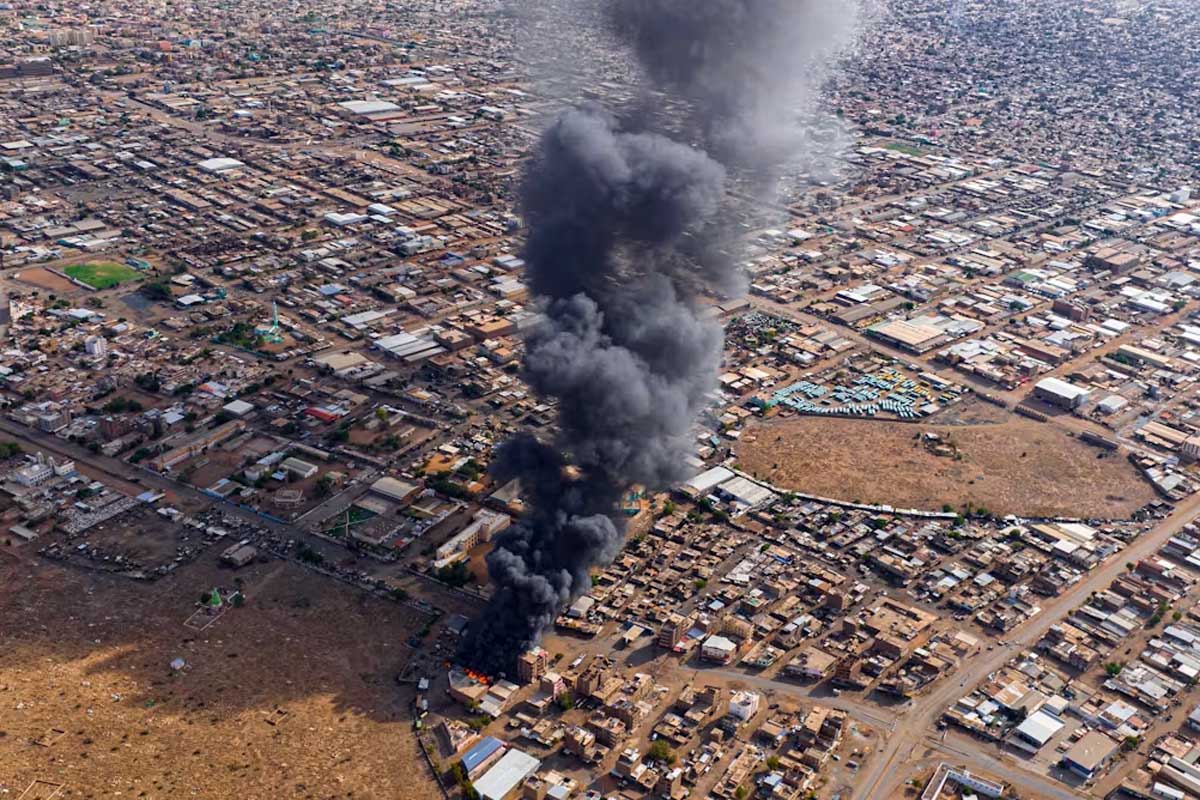Local researcher analyses the extent of the disaster and what measures are needed

The UN recently warned the threat of famine in Sudan. The war between the army and the paramilitary Rapid Support Forces has cost civilians their lives and massively destroyed livelihoods. Around 18 million people are already suffering from acute hunger, including 3.6 million children who are acutely malnourished.
Oliver Kiptoo Kirui, co-author of Sudan National Household Survey – carried out in the middle of the war – provides insight into the extent of the food crisis in the country.
What is the situation of food security in Sudan?
Acute food insecurity is measured using a widely accepted 5-level classification, with severity increasing from minimal to stressed, crisis, emergency and famine. This scale is designed to help governments and other humanitarian actors quickly understand a situation and take action.
Food security in Sudan has deteriorated dramatically due to ongoing conflict and economic decline, with over 20.3 million people (more than 42% of the population) facing acute food insecurity by mid-2024.
Some are already in the crisis phase. Others have already slipped into the emergency phase. This indicates severe food shortages and widespread hunger.
Rural households are particularly hard hit, with disruption to agriculture, limited access to markets and soaring food prices. Together, these factors have severely affected household food security, particularly in conflict-affected areas.
The conflict has disrupted agricultural production and trade routes. At the same time, the economic crisis fueled by the war has led to hyperinflation, with food prices 350 percent above the five-year average. Many people cannot afford food.
Rural areas have been hit particularly hard. 40 percent of farming households have not cultivated their land. And those who have have been unable to plant or harvest due to insecurity. Food has become much scarcer.
The conflict has also led to the displacement of people, plunging Sudan into the world’s worst refugee crisis, putting further strain on food supplies as displaced people seek refuge in regions where resources are already scarce.
What do we know about the extent of the emergency?
Recent UN reports indicate a humanitarian crisis. Some 9.2 million people have been displaced since mid-2023. Access to food remains a critical need, particularly in Darfur and Kordofan. Rising hunger rates and severe acute malnutrition are expected to lead to more deaths unless urgent action is taken.
According to a recent analysis by IFPRI and UNDP, more than half of rural households reported consuming less food – for example, by skipping meals or reducing portion sizes. This underscores the urgent need for immediate and sustained humanitarian assistance.
Displacement and food shortages in Sudan are worse than ever, with millions of people in urgent need of assistance as their livelihoods and markets are destroyed.
The UN stresses that urgent and comprehensive humanitarian action is needed to prevent famine. The high rate of severe, acute malnutrition among children is particularly worrying and is a warning of an impending public health disaster.
How severe was Sudan’s food shortage before the war?
Even before the current conflict, Sudan faced food security challenges, including economic instability, high inflation and frequent climate shocks such as droughts and floods. Agricultural production was often below average, and many regions relied on food imports, which were easily disrupted by logistical problems.
Before the war, rural households struggled with poor infrastructure, a lack of agricultural inputs and limited extension services. The current conflict has made them even more vulnerable.
Sudan’s agriculture struggles with numerous problems, such as outdated agricultural practices, lack of investment and inadequate infrastructure. Frequent climate shocks such as droughts and floods have added to these problems, leading to chronic deficits in food production.
Due to the economic situation and political instability, the country’s ability to import food was already compromised, leaving the country highly dependent on irregular local production.
What should a local and international response look like?
Improved access to credit, better farming methods, expanded and deepened social protection and resilient infrastructure could contribute to long-term food security.
Well-coordinated humanitarian assistance reaching the most vulnerable populations is crucial for immediate relief and reconstruction.
Both local and international responses need to be robust and multifaceted. These include:
Immediate humanitarian aid: The rapid provision of food aid and nutrition support is critical. This includes opening and maintaining safe humanitarian corridors for uninterrupted delivery of aid. Immediate action is needed to prevent famine and reduce malnutrition rates, particularly among children and other vulnerable groups.
Supporting agricultural production: Providing seeds, tools and training to farmers can help increase local food production and farmer resilience. Initiatives to improve water management and irrigation infrastructure are also essential. Long-term investments in sustainable agricultural practices and infrastructure are needed to rebuild and stabilize the agricultural sector.
Economic support: Stabilising the economy through financial assistance, reducing inflation and ensuring the availability of affordable basic goods can mitigate the crisis. Economic interventions should focus on securing livelihoods and improving market access to make food more affordable and available.
Conflict resolution and security: Efforts to resolve the conflict and build peace are essential to enable safe access for humanitarian assistance. This will also enable people to restore their livelihoods. Sustainable food security cannot be achieved without a resolution of the conflict. Peacebuilding initiatives must be prioritized to create a stable environment for recovery.
International coordination: A coordinated international response is needed to ensure efficient use of resources and meet the needs of displaced populations. Collaboration and resource sharing among humanitarian actors can improve the effectiveness of aid and ensure that assistance reaches those who need it most.![]()

This article is republished from The Conversation under a Creative Commons license. Read the original article.
Authors
Oliver Kiptoo KiruiScientific Assistant, International Food Policy Research Institute (IFPRI)
Disclosure Statement
Oliver Kiptoo Kirui does not work for, consult for, own shares in, or receive funding from any company or organization that would benefit from this article, and has disclosed no relevant affiliations beyond his academic employment.
Partner offers
The University of Birmingham is a founding partner of The Conversation UK and provides funding.
As a member of The Conversation UK, the Karolinska Institutet provides financial support.



